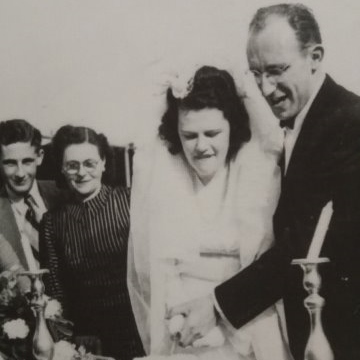Jewish News
Bravery of a Japanese diplomat at exhibition
“Sugihara didn’t only save my grandfather, he also saved me. Because if not for Sugihara I may very well not be standing here today.”
These were the words of Rebbetzen Sarah Feldman of the Gardens Synagogue in Cape Town, speaking on Monday at the opening of the Jewish Refugees in Shanghai exhibition at the South African Jewish Museum. Her grandfather, Rabbi Shimon Goldman, hailed from the city of Shedlitz in Poland.

MOIRA SCHNEIDER
When Hitler invaded Poland, signalling the start of the Second World War, Rabbi Goldman, then a teenager, escaped to Lithuania and was fortunate to have been issued a visa by the Japanese consul there, Chiune Sugihara, acting contrary to his government’s express instructions.
“Sugihara was faced with a huge moral dilemma,” Rebbetzen Feldman related.
“His humanity won. Together with his brave wife Yukiko, this righteous couple worked non-stop issuing 300 visas a day – the amount that would usually take a month to issue.” In so doing, the couple saved 6 000 Jewish lives.
“Sugihara issued thousands of visas until the consulate closed and he was forced to leave Lithuania. He continued issuing documents from his train window and as the train pulled out of the station he gave the consul visa stamp to one of the refugees who was able to use it to save even more Jews.”
Because Rabbi Goldman and his fellow rabbinical students only had a three-month visa for Japan, they had to make alternative arrangements. So, they took the short boat trip to Shanghai – then under international rule – and open to refugees.
In his memoir “From Shedlitz to Safety”, Rabbi Goldman describes “the large and cohesive Jewish community that greeted them, which even included organised kashrut facilities.”
After Japan entered the war in December 1941, Shanghai became in effect a Japanese city, along with the establishment of the Shanghai Ghetto with curfews and military occupation. Rabbi Goldman spent five years in the city, continuing his studies at the Rabbinical Academy Tomchei Temimim that had been transported from Europe.
“Life was tough, hunger was a daily challenge, but thanks to food and aid coming from overseas he and his fellow students survived,” Rebbetzen Feldman said.
The rabbi was in fact the only member of his family to do so. After the war, he received a visa for America, passing away last year at the age of 91.
“On his tombstone is listed the names of his parents and siblings, none of whom has a gravesite of their own.
“In an interesting twist of fate, I have a cousin who is now the Chabad rebbetzen in Shanghai,” Rebbetzen Feldman concluded.
This is but one of the stories of the 30 000 Jewish refugees who found sanctuary in Shanghai during World War 11. “Many were students and rabbonim from some of the greatest yeshivot of Eastern Europe,” Gavin Morris, director of the museum, remarked at the opening.
Others stories are recounted at the exhibition that brings together for the first time photos, personal stories and artefacts from the Shanghai Jewish Refugees Museum.
Professor Evance Kalula, director of the Confucius Institute at UCT that organised and co-hosted the exhibition with the South African Jewish Museum and the Shanghai Jewish Refugees Museum, noted that in terms of contributing to their host countries, the Jews of South Africa and Shanghai were “very similar.”
“It is an important story for us showing China as a place of refuge,” he said referring to the exhibition, adding, “We do forget sometimes that refugees do contribute to society wherever they are.”
The exhibition runs until 19 March.
Antony Raphael Isaacs
March 14, 2017 at 12:42 am
‘The’ good ‘ people on this earth are as few and far between as are gold & diamonds in a vast desert.
Sugihara was one of these rare humans.
How different life on earth would be if even a tiny percentage of humans had a bit of Sugihara in them.
I have grave doubts that it will ever be so !’